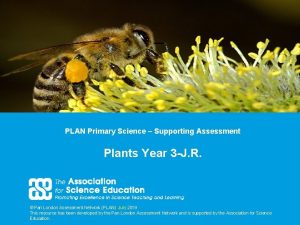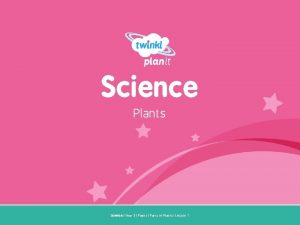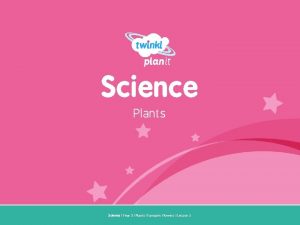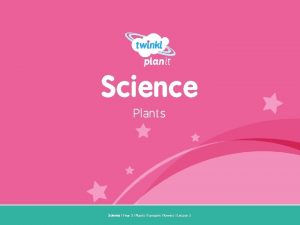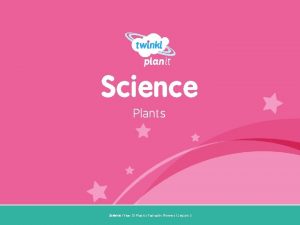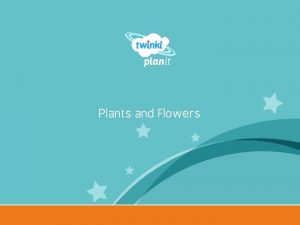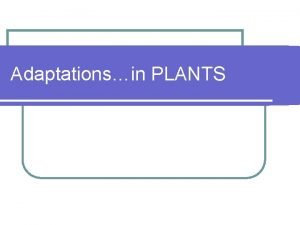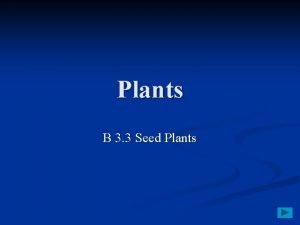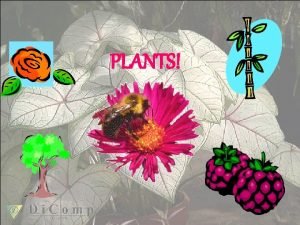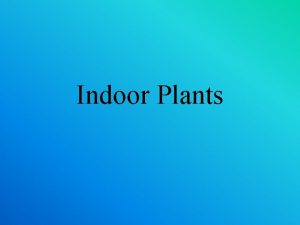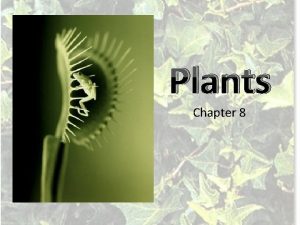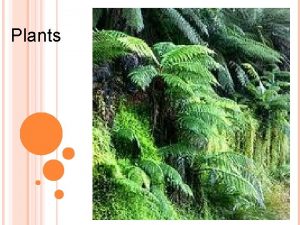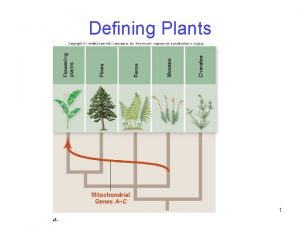Science Plants Year One Science Year 3 Plants

















- Slides: 17

Science Plants Year One Science | Year 3 | Plants | Moving Water | Lesson 4


• I can investigate how water is transported in plants. • I can explain the function of the stem. • I can explain how water is transported in a plant. • I can set up a comparative investigation. • I can suggest ways to find answers. • I can make a prediction. • I can make a conclusion.

Work as a group to create a human model to demonstrate the function of the stem. Think about what the stem does. How can you work together to show this? Show your human models to the rest of the class and see what they think! Perhaps some of you can act as the roots? How can you show water travelling through the stem? Could some members of your group be the leaves?

The process of water transportation is the way water moves through a plant. The roots absorb water from the soil. The stem transports water to the leaves. Water evaporates from the leaves. This evaporation causes more water to be sucked up the stem. The water is sucked up the stem like water being sucked up through a straw.

Can you explain the process of water transportation to your partner? Use this diagram to help!

How did you do? Did you explain it correctly? Water evaporates from the leaves. The stem transports the water. Water is absorbed by the roots.


Look at the flower. It started off as bright white. What has happened to it?

Food colouring was added to the water. The stem sucked up the coloured water, then transported the water to the flower. The colour showed up in the petals. Can anyone think of how we could use this idea to compare the speed of water transportation in different temperatures?

If you put white flowers in coloured water at different temperatures, you could watch their petals to see which flowers change colour the fastest. The flowers that change colour first have the quickest speed of water transportation, as the stem is transporting the coloured water the fastest. Can you think of places around school that are different temperatures? Think of a hot place, a place that is at room temperature and a cold place.

Some children have made predictions about which temperatures will cause different speeds of water transportation. Work as a group to sort the predictions into those you agree with and those you disagree with. Can you explain why you agree or disagree?

You will be changing the temperature in this investigation You should keep everything else the same, such as the amount of water in each beaker (100 ml), the size of the beaker, the type of flower, the length of the stem and the amount of colouring in each beaker (5 tablespoons). 1. Add 5 tablespoons of food colouring to the water in each beaker. 2. Put one flower into each beaker of coloured water. 3. Place the beakers with flowers in around school in the different places you decided on. Remember, each place should be a different temperature.

You are trying to spot which flowers start to change colour the fastest. You will measure the time it takes the flowers in the different temperatures to change colour. Decide how you are going to make your observations how often are you going to check the flowers? Make sure you keep careful records of your observations.

A conclusion is the final answer to what you were trying to find out. Around the room are several different possible conclusions to the investigation you have carried out today. Move around the room looking at the conclusions. Use your observations to think about whether you agree with the different conclusions or disagree with them. Write your ideas around the conclusions. When you have finished, look at everybody's ideas. Come to your own conclusion using your observations. Can you explain why you came to your conclusion?

• I can investigate how water is transported in plants. • I can explain the function of the stem. • I can explain how water is transported in a plant. • I can set up a comparative investigation. • I can suggest ways to find answers. • I can make a prediction. • I can make a conclusion.

 Plants year 3 science
Plants year 3 science In what year is act one, scene one set?
In what year is act one, scene one set? One god one empire one religion
One god one empire one religion Little dog run
Little dog run One king one law one faith
One king one law one faith One god one empire one emperor
One god one empire one emperor One ford plan
One ford plan See one do one teach one
See one do one teach one One price policy
One price policy Willow cabin speech
Willow cabin speech Studiendekanat uni bonn
Studiendekanat uni bonn Asean tourism strategic plan
Asean tourism strategic plan Graphic organizer with the aims of la liga filipina
Graphic organizer with the aims of la liga filipina Reproduce by spores
Reproduce by spores Vascular vs nonvascular plants
Vascular vs nonvascular plants Examples of non flowering plants
Examples of non flowering plants C3 plant
C3 plant What is my favourite subject?
What is my favourite subject?
